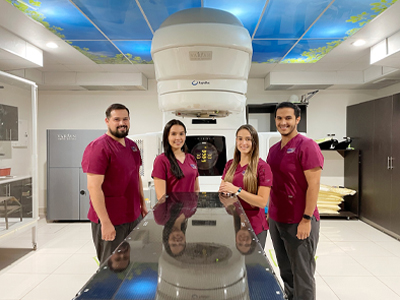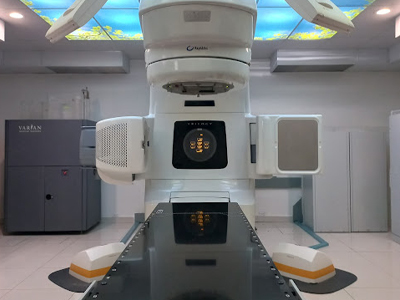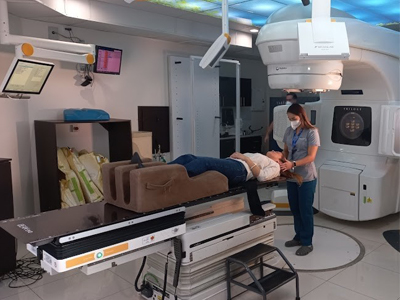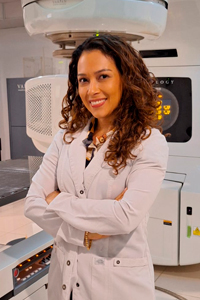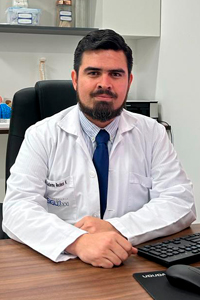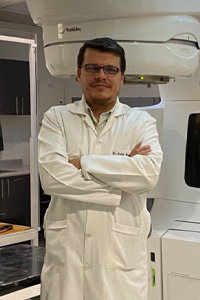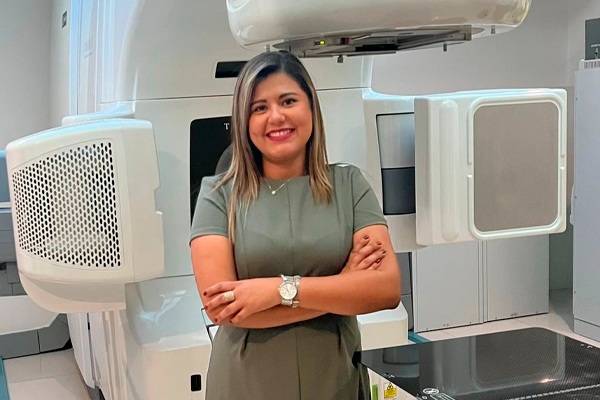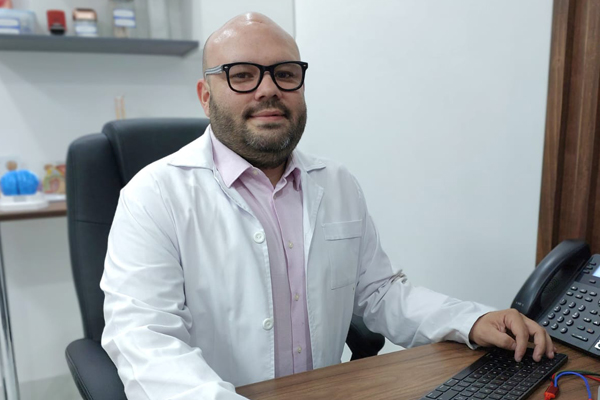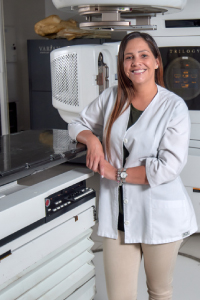Cranial Stereotaxic Radiosurgery

Stereotactic Radiosurgery (SRS) is a highly precise form of radiation therapy developed to treat small tumors and functional abnormalities of the brain.
Despite its name, Stereotactic Radiosurgery (SRS) is a non-surgical procedure that delivers highly focused radiation in much higher doses and in only one or a few treatments.
This treatment is possible thanks to the development of highly advanced technologies and the use of artificial intelligence. These enable the delivery of maximum radiation doses directly within the target, while maximally reducing the dose received by surrounding healthy tissue, thereby destroying the tumor and achieving maximum local control.
Let's learn more about this technique in the next section.
What is Cranial Radiosurgery?
SRS (Stereotactic Radiosurgery) is non-invasive, using highly focused radiation beams to treat brain tumors, vascular malformations, and other neurological conditions.
It's called this way, but it doesn't involve traditional surgery with incisions. Instead, this advanced technique precisely directs multiple high-energy radiation beams toward a specific target within the brain.
The intensity of each individual beam is low, which minimizes damage to surrounding healthy tissue. However, at the point where all the beams converge, a radiation dose high enough to destroy or control the growth of abnormal cells is delivered.
How Does It Work and What Are Its Advantages?
Imagine a group of magnifying glasses focusing sunlight onto a single point to generate heat. Cranial radiosurgery works in a similar way, but it uses radiation instead of light. Thanks to this millimeter-level precision, it can treat areas deep within the brain or those that are difficult to reach with conventional surgery.
Some of its main advantages lie in its non-invasive nature, which generally results in faster recovery and fewer complications compared to open surgery. Likewise, it can be a viable option for patients who aren't candidates for traditional surgery due to their age, health status, or the location of their lesion.
What conditions can be treated with Cranial Radiosurgery?
However, it's important to note that the suitability of cranial radiosurgery as a treatment depends on several factors, including the patient's general health. A specialized medical team will evaluate each case to determine the best treatment option.
What Role Does Artificial Intelligence Play?
Our Radiotherapy Team: The Varian Linear Accelerator is the most versatile equipment on the market for Radiotherapy and Radiosurgery. Its versatility allows for the irradiation of tumors less than 1 cm in diameter, among other capabilities.
Our Artificial Intelligence systems, including Elements, RadFormation, and Exactrac, are advanced software and devices. They monitor lesions in real-time and assist in delimiting healthy structures. This allows for a better and more precise adjustment of the dose distribution to the target's shape and size, ensuring greater treatment success and maximal preservation of healthy tissue.
During your appointment process, let your doctor know if any of the following circumstances apply to your case:
- You are taking oral medications or use insulin to control diabetes.
- You have an allergy to intravenous contrast media or iodine.
- You have a pacemaker, artificial heart valve, defibrillator, brain aneurysm clamps, implantable chemotherapy pumps or ports, neurostimulators, eye or ear implants, stents, coils or filters.
- Suffers from claustrophobia
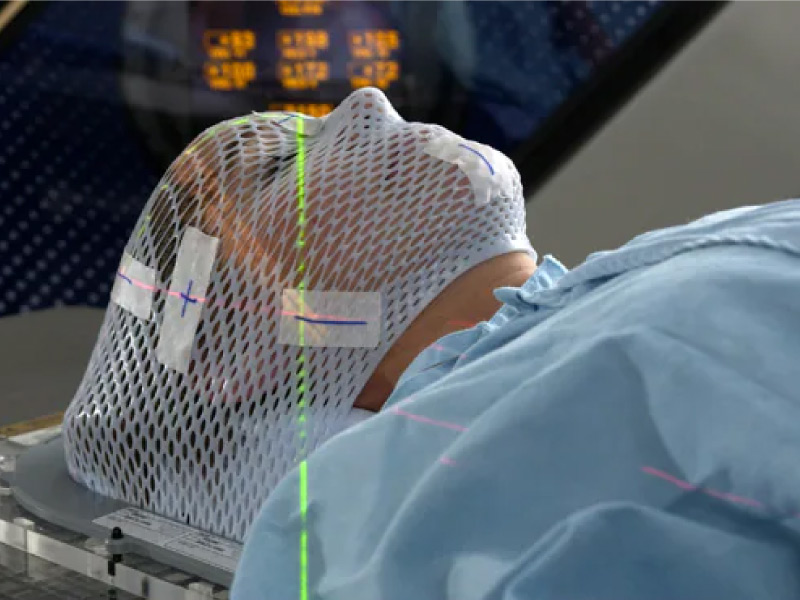
What does it feel like during and after the procedure?
Radiosurgery treatments are similar to getting X-rays.
X-rays cannot be seen, felt, or heard. The treatment itself does not cause any pain or discomfort.
If you feel pain for other reasons, such as back pain or discomfort from the head device or immobilization device, please inform the medical or nursing staff.

After radiotherapy or radiosurgery, you should undergo regular examinations and follow-up check-ups.
When using techniques such as SRS the goal is to maximize the cancer-destroying abilities of radiotherapy, while minimizing its effects on healthy tissues and organs, thereby avoiding the side effects of the treatment itself.

